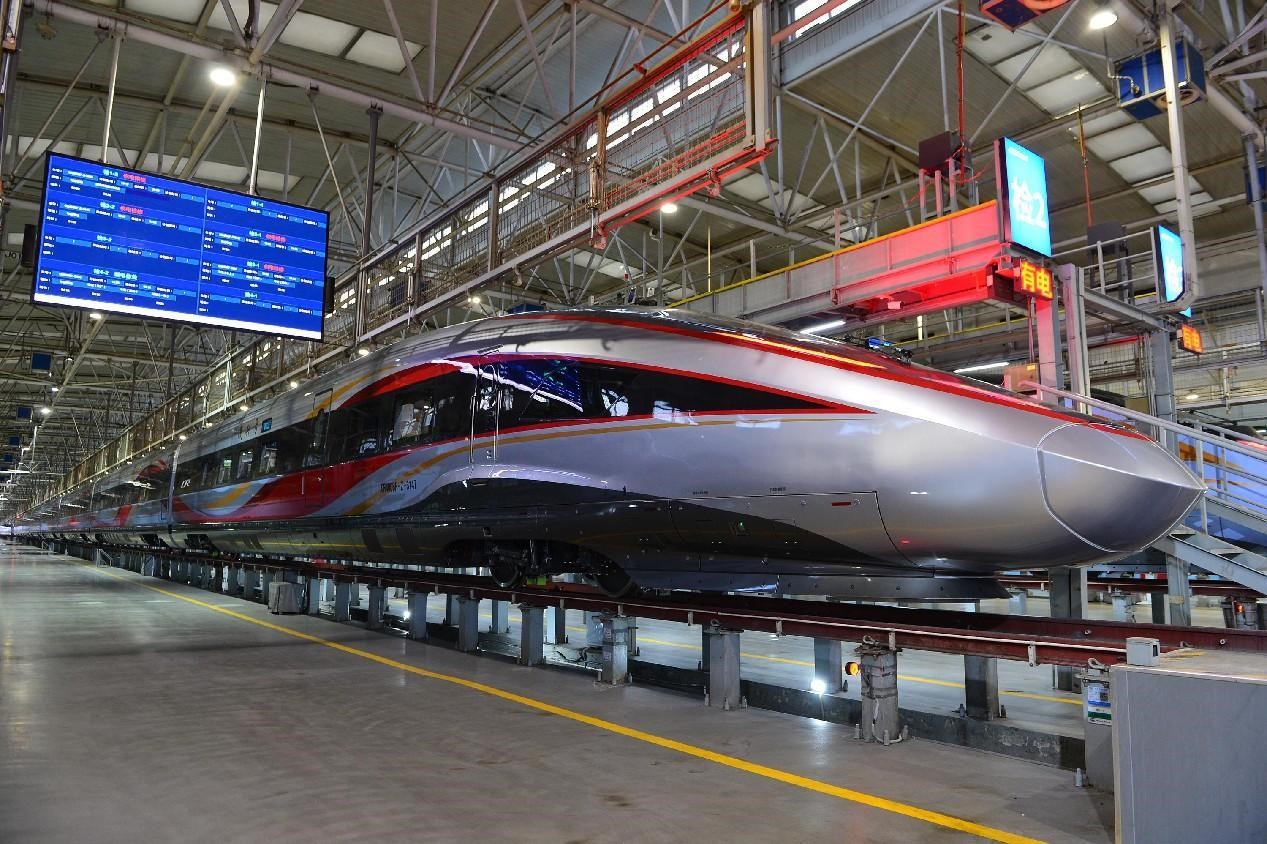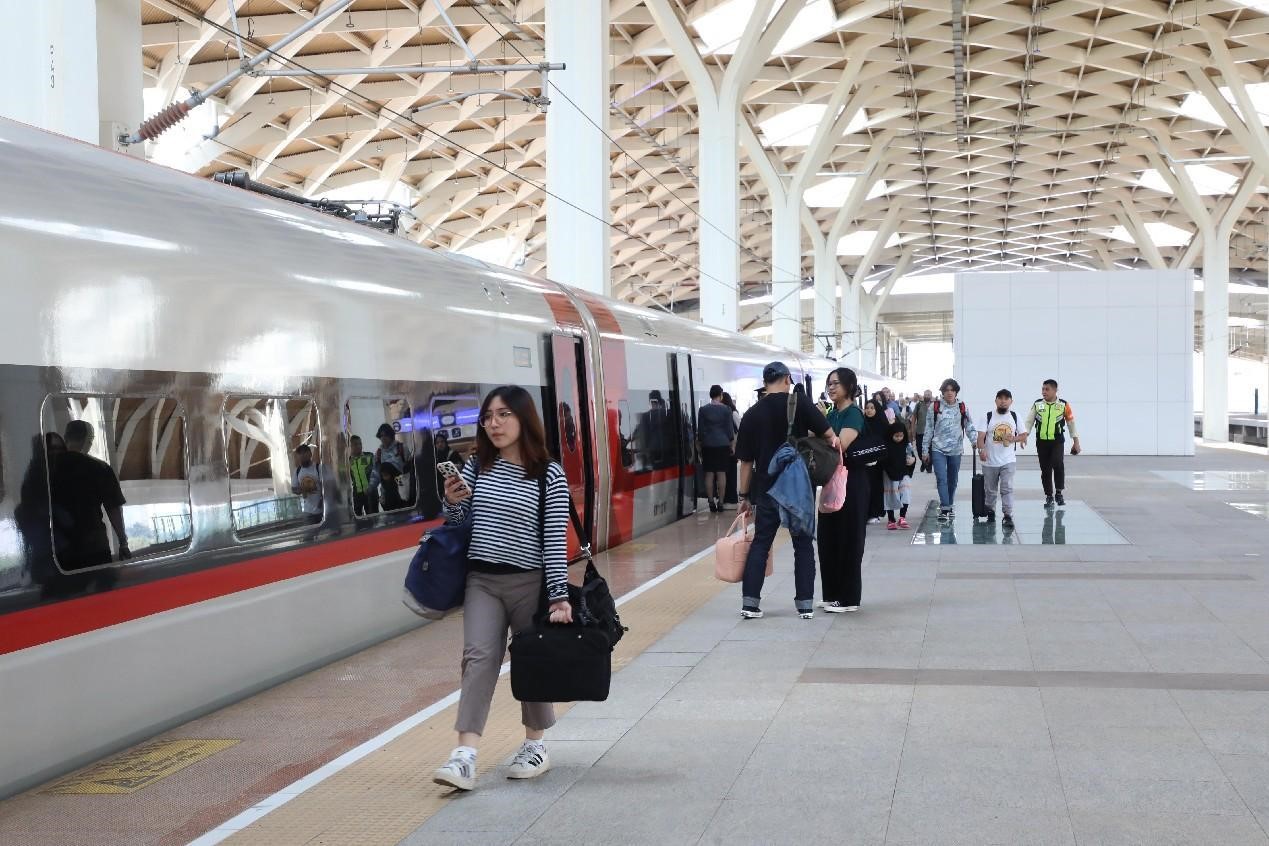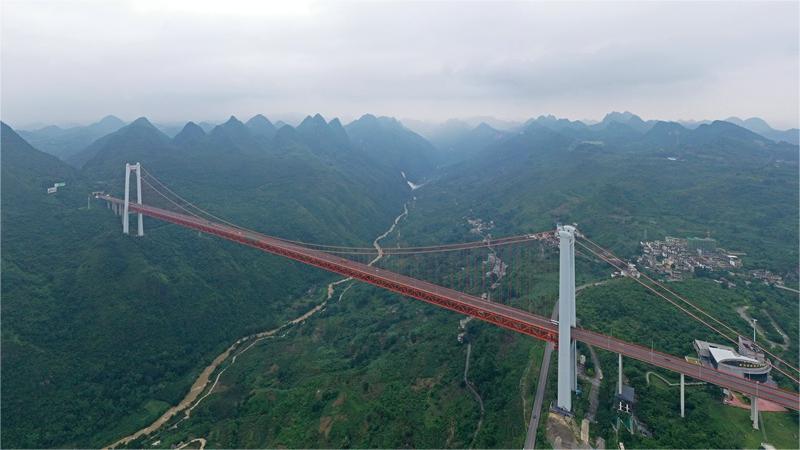China sets exemplary model for world in high-speed rail technologies
Today, China's Fuxing bullet train has become the world's fastest commercially operated train with the most diverse operating scenarios. By the end of 2023, Fuxing bullet trains had operated 2.34 billion kilometers safely and transported a total of 2.2 billion passenger trips.
From the initiation of the train's development in 2013 to its impressive debut in 2017, the Fuxing bullet train epitomizes China's innovative prowess.
In 2004, faced with the country's surging demand for a railway speed-up, China began to track high-speed rail technologies from around the world and successively introduced technologies from Japan, France, Canada, and Germany.

A Fuxing bullet train runs on the Beijing-Guangzhou high-speed railway in Zhengzhou, central China's Henan province. (People's Daily Online/Wang Wei)
Three years later, the Hexie high-speed train officially went into service, and subsequently, a series of products were developed and put into mass production.
With the remarkable performance of the Hexie series, why was there a need to develop the Fuxing bullet trains?
The total mileage of high-speed railways in China is unparalleled in the world, and no county has such a complex operating environment.
"Some imported train models inevitably face challenges in adapting to the local conditions and require further innovation," said Ye Yangsheng, chief engineer of China Railway.
Every upgrade or modification on foreign technology platforms inevitably involves software updates, and sometimes even requires the assistance of foreign experts, Ye explained.
Although China mastered the technologies of the Hexie series, and many of the technologies were developed and improved through independent innovation, due to the use of foreign technology platforms and adoption of foreign standards, further development was constrained, said former chief engineer of China Railway Corporation He Huawu. Therefore, it was imperative to develop high-speed trains with Chinese standards.
"A high-speed train traveling at a speed of 350 kilometers per hour includes over 40,000 parts, covering various technical fields such as mechanics, metallurgy, materials, power electronics, chemical engineering, and information control," said Wang Jun, chief scientist of China Railway Rolling Stock Corporation (CRRC).
Besides, with China's super large railway network, complex geographical and climatic conditions, and long-distance and continuous high-speed operation, the independent development of high-speed trains faced unprecedented challenges, Wang added.
To reduce noise, more than 3,000 tests were conducted on different materials and structures for sound insulation. As a result, the Fuxing bullet train is able to run at a speed of 350 kilometers per hour with a minimum noise level of 65 decibels in the train compartments.
To reduce vehicle resistance and energy consumption, over 40 different solutions were analyzed through simulation and wind tunnel tests. As a result, aerodynamic resistance was reduced by 14 percent, and energy consumption per passenger per 100 kilometers was cut by 20 percent.
To achieve optimal harmonic control for the entire vehicle, the research and development team went through numerous cycles of design, analysis, testing, and optimization. This process ultimately led to the development of an innovative control module that has reached world-class standards.

A Fuxing bullet train awaits maintenance in Xi'an, northwest China's Shaanxi province. (People's Daily Online/Tang Zhenjiang)
During the independent innovation of the Fuxing high-speed train, the research and development team has made breakthroughs in core control technologies such as traction, braking, and networking, as well as key technologies in wheel, axle, and gearbox design and manufacturing.
Among the 254 important standards adopted by the train, 84 percent are Chinese. The overall design of the train, as well as key technologies such as the train body and bogie, were independently developed, and the software was entirely self-developed, possessing complete independent intellectual property rights.
After undergoing over 10,000 simulations, ground tests, and line trials, the Chinese-standard high-speed train Fuxing obtained its model certificate and manufacturing license in 2017. In June of that year, the Fuxing bullet train made its debut.
Three months later, the train started commercial operation with a speed of 350 kilometers per hour on the Beijing-Shanghai high-speed railway, and in December 2019, it also achieved a speed of 350 kilometers per hour on the Beijing-Zhangjiakou high-speed railway, operating in autonomous driving mode.
In June 2021, the Fuxing train, powered by internal combustion and electric power, extended its services to Lhasa, Xizang autonomous region, marking that the train has reached 31 provinces, municipalities and autonomous regions in China.
From research and development, manufacturing to operational services, more than 100 core enterprises and over 2,100 associated enterprises are involved in designing and producing components for the high-speed trains.
The Fuxing bullet train has stimulated the growth of the entire rail transportation industry. Statistics show that the scale of China's rail transportation equipment industry reached approximately 480 billion yuan ($66.05 billion) in 2022, and is expected to hit 600 billion yuan by 2025.
The Fuxing high-speed train has also ventured beyond the borders, becoming a golden signboard of China internationally.
In December 2021, the China-Laos Railway commenced operations, marking the first time for the Fuxing bullet train to go outside of China. In October 2023, a high-speed train with a maximum speed of 350 kilometers per hour, developed based on the Fuxing platform, was put into service on Indonesia's Jakarta-Bandung High-Speed Railway. It was the first time for an overseas project to fully use Chinese railway systems, technology and industrial components.
By the end of 2023, China had led the development and revision of 65 international standards under the International Organization for Standardization, International Electrotechnical Commission, and International Union of Railways (UIC).
Additionally, it had participated in 249 international standard development and revision projects. The formulation of all 11 system-level UIC international standards in the field of high-speed rail was led by China.

Passengers board a high-speed train of the Jakarta-Bandung High-Speed Railway on the platform of Halim station in Jakarta, Indonesia. (People's Daily/Cao Shiyun)
Photos
Related Stories
- Modern China: Harvest meets high-speed train
- More high-speed trains planned between Chinese mainland and Hong Kong starting June 15
- Chizhou-Huangshan high-speed railway starts test operation
- China to accelerate development of railway tech
- Nanchang readies high-speed trains for Spring Festival travel rush
Copyright © 2024 People's Daily Online. All Rights Reserved.









